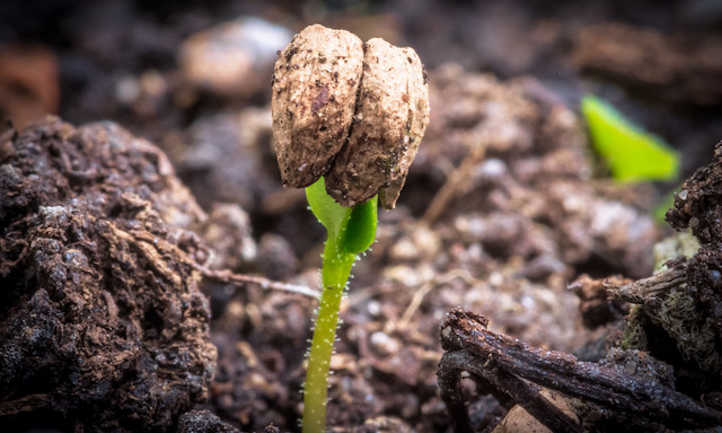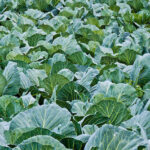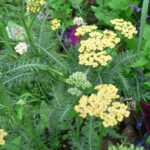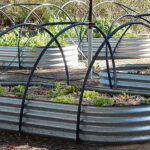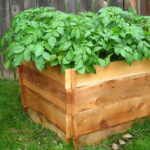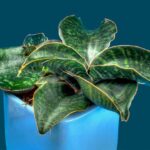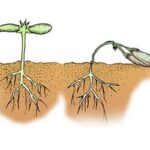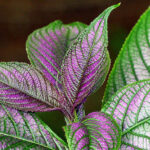Most people with a beginner’s knowledge of growing plants accept that seeds need light to germinate. If you’re starting seeds indoors, you know grow lights are necessary where sunlight is not available. But did you know there are some seeds and plants that don’t need light to germinate?
The basic foundational needs of growing are light, water, and soil. These three contribute to photosynthesis. Degrees of these essential elements are required, but sometimes sunlight or light, in general, is not necessary to sprout seeds. Sometimes sun inhibits seeds that germinate in darkness.
Some seeds don’t need light to break through their seed casings and sprout. Most seeds germinate best with controlled amounts of UV generation, but there are seeds that germinate in the absence of light.
Furthermore, there are plants that get enough just light in highly shady areas of a garden or even in darkness.
What Do Seeds Require To Sprout?

Germination occurs when a dormant seed springs to life through interaction with moisture, oxygen, light, and soil content. Let’s cover the basics of seed sprouting through an examination of the necessary components involved.
Moisture
Seeds contain small amounts of moisture on their own, but they need to be planted in moist soil to spring back to life from dormancy. Extra moisture kicks off a process called imbibition. In this stage, the seed fills with water, and enzymes within are activated that help pressurize the seed’s casing and assist in seedling emergence from the soil surface.
It’s important to properly balance the amount of moisture in your soil for seed starting. Each seed has different requirements. Quinoa, for example, requires very little moisture and shallow soil cover to germinate. Therefore, the soil should be kept dry for some time before seedlings develop. Too much water will rot quinoa seeds.
Seeds like nasturtium or sunflowers have a thick seed coat that requires a lot of water to break through, and too little moisture in this instance will either prevent germination altogether or cause the seedling to die when it shoots up. Often, these are presoaked to ensure they will germinate.
Oxygen
Seeds need oxygen and proper airflow to produce enough energy to spring back from dormancy. This is due to glucose which assists in the aerobic respiration process. At this stage, seeds release energy from food stores, and they require oxygen to do so.
Without enough oxygen, seeds cannot offset enough water and carbon dioxide to produce the energy needed to grow.
So how do we ensure seeds have enough oxygen? Understanding a seed’s planting depth is one way we can help them germinate. In most cases, plant seeds under a thin layer of moist soil.
Planting seeds like amaranth or mugwort too deeply keep seedlings from the oxygen they need for imbibition and, in turn, keeps seeds from accessing food stores necessary for germination. This is because the seed coat of these seeds is thin.
Some seeds with a thin coat don’t even need to be covered with soil and can be sprinkled on the soil surface in a thin layer. There are, however, seeds with a thicker coat that germinate best with scarification, or when the seed casing is scratched or striated. The process of striation allows seeds with a thick coat to access the gasses, like oxygen, needed to use food stores for energy.
There’s a lot of debate among gardeners about how deep to plant seeds. Often seed packets say to plant at .25 inches deep, but this may be too deep for some seeds. A general rule of thumb when it comes to planting depth is to never plant a seed more than twice the depth of its diameter.
As mentioned above, smaller seeds with thinner seed coats may not even need to be covered. Another way to ensure proper oxygen flow is to avoid compressing the soil. Instead, allow seedlings to emerge from lightly patted soil.
Temperature

Although many say seeds need light to germinate, what they really mean is seeds need the right temperature to germinate. Germination rates are a huge factor here. If a seed has a high germination rate, it may not be as necessary to control temperature.
For seeds with a lower germination rate, gardeners have to plant more seed for a decent yield. In this case, it’s best to try to have the right temperature conditions set up ahead of time so seeds are not wasted.
Sometimes planting seeds at the right time and in the right season is the best way to ensure temperature conditions are right for germination. Some seeds love the heat of spring or summer, and some varieties prefer cool conditions of fall. Some even require planting in fall to be exposed to cold stratification through winter which promotes sprouting in spring.
Other times, it’s necessary to start indoors and use a tray with a heating mat underneath to start seeds that don’t require a direct sow. Most seeds require 75 degrees Fahrenheit to germinate. Seed starting mats can raise the heat of a seed tray by 10 degrees. So in this case, a greenhouse or indoors that has a basal warmth of 65 degrees Fahrenheit would work.
Seeds that need set temperatures to germinate before they are planted in your garden can only access their needs when they are planted at the right depth and have adequately moist conditions.
Sometimes lights can provide adequate heat if seeds are exposed to the right amount. But shallowly planted seeds could be killed in this process.
It’s best to keep up with the requirements for seed sprouting to see how finicky you need to be in the sprouting process.
And Now For Light!
Interestingly, most commercial seeds germinate with or without light because they have been selected for their viability outside of a required set of conditions. There are some that need to be exposed to light, though. More on some specific seeds that do or don’t need light to germinate lies ahead.
Scientists have been studying light requirements for germination for almost one hundred years. Through trials of varying heat and light controls, Kinzel (1926) learned there are seeds that need light and seeds that need darkness to sprout.
Those that need light sometimes don’t need to be covered with soil. This allows seeds to access the light that will suitably support the germination process. Those that need darkness to germinate may need deeper planting in the soil to block out UV rays that could halt sprouting.
Is Light Even Necessary?
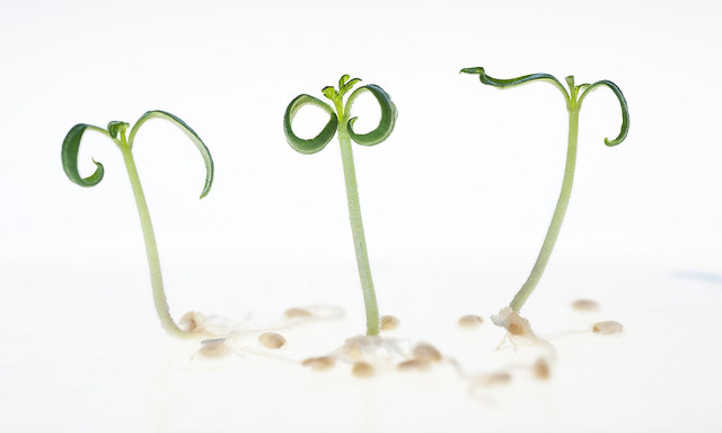
Here’s the truth: all seedlings need light to root. Without it, they will get leggy as they strain to reach for a light source. The amount of light each seedling needs will vary from plant to plant.
Those that require less light at an adult stage don’t need as much as those that enjoy full sun throughout their life cycle. Seedlings exposed to too much light or heat will wither and die.
But when it comes to seeds, some need light to germinate and some do not. Knowing this is important when deciding whether or not to start seeds indoors or outdoors in your garden. Let’s take a moment to look at photosynthesis and examine why some seeds germinate in light and some don’t.
Plant Photoreceptors
The key to understanding which seeds need light to germinate and which need darkness is in plant phytochromes. Phytochromes are light receptors in plants that aid in photosynthesis via interactions with red ultraviolet light.
There are two types of phytochromes that exist in the plant world: type I which are activated by far-red UV light, and type II which are activated by red UV light.
Trees in the canopy of a rainforest for example can handle direct sunlight or red light due to their type II phytochromes. As this light is absorbed, leaves in canopy trees then reflect far-red light not only back toward the source of light they’ve taken in, but also below to forest floor plants. These plants at the base of the forest contain type I phytochromes and tend to get burnt if they receive red light, rather than far-red light.
So the answer to this question when it comes to plants with leaves is always yes. Light is necessary, but the type of light is of huge importance here. Depending on the predisposition of a plant, like herbs, for instance, the wrong kind of light can do damage. The reverse is true as well. Plants that receive the right kind of light thrive when all other needs are met.
How Much Light Is Enough
If you’re dealing with seeds that need light to germinate, you can start them in a tray with grow lights or in a sunny south or north-facing window (depending on which hemisphere you live in).
Alternately, if it is warm and sunny enough, seeds can be sown directly in a thin layer on the soil. A greenhouse in direct sunlight in early spring can also provide enough light and heat for germination.
Seeds that don’t need light to germinate should be sown in trays. To ensure they are not exposed to light, try covering them in black plastic. When covering, monitor the temperature to make sure it stays within the proper range for germination.
Plastic will trap lots of heat and keep soil moist providing humidity to your tray.
Seeds That Need Light
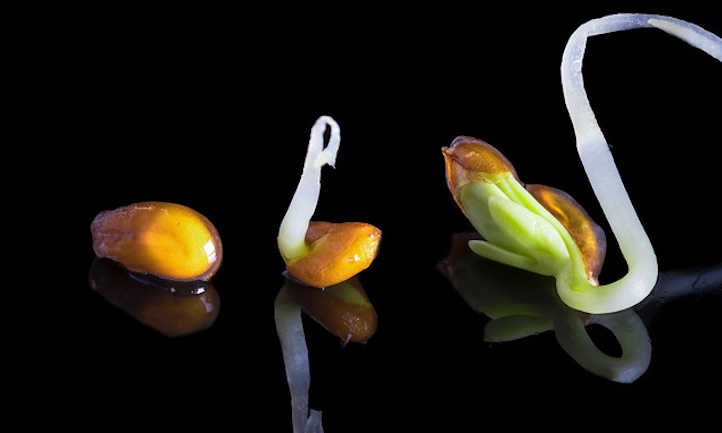
Most vegetables need UV radiation to germinate, so we’re not going to list them all here. But here are a set of plants commonly grown from seed that will not germinate without light. All of the examples here are of plants with tiny seeds that have thin seed casings.
- Lettuce: here we have an example of a seed that doesn’t need to be covered with soil to germinate in your garden. Lettuce seeds must be exposed to light to grow into seedlings. You can sprinkle them on soil or vermiculite and then cover them with a thin layer of soil or vermiculite.
- Carrots: much like lettuce, to get carrot seeds to germinate, expose them to light by sprinkling them on the surface of the soil. Use the same method as lettuce: plant seed in a row on soil or vermiculite and cover with soil or vermiculite.
- Rose: rose seeds germinate best in direct sunlight. Keep soil moisture at the right level and seedlings will emerge in about six weeks.
- Certain salvias: check varieties here because there are some salvia species that prefer darkness. After direct sowing in the ground of your garden, keep the soil moist but don’t wash tiny seeds away.
Plants That Prefer The Dark
As we’ve covered, there are several species that prefer existing in darkness. Many of these are popular vegetable garden varieties with thick seed casings, and they germinate well when under dark cover deep in the soil.
- Nasturtium: the benefits of gardening with nasturtium are many. Direct sow nasturtium seeds about three times their diameter, covering them with rich organic soil. Soon after you’ll have happy round-leaved seedlings popping up!
- Calendula: sun inhibits calendula growth. Cover these worm-like seeds in 1 inch of organic soil out of direct sunlight. Keep the soil moist when gardening with calendula.
- Sunflower: mammoth varieties require a planting depth of three times their diameter, and do best under a plastic covering before they germinate. Once the first sign of germination shows, remove the plastic covering and transfer seedlings into direct light.
- Onion: Allium seeds are large with a thick seed casing and will not germinate in direct light. They actually prefer long nights during germination. So you can start them indoors under plastic, and remove the plastic and place them under light after they’ve sprouted.
Seeds That Don’t Really Care

The following plants will sprout either with or without light. Their seed sizes tend to fall in between the large and small categories, of those mentioned above.
- Tomato: start these indoors or outdoors in the right temperature conditions and you’ll have a tomato crop growing all the way up to the middle of fall in some places.
- Cucumber: personally, I can’t prevent a cucumber seed from sprouting. They will sprout under almost any condition where the soil is involved. If you’re looking for a high germination rate, save seeds from your favorite cucumber variety. One thing to remember with cucumber is to leave out the vermiculite when starting the seeds.
- Eggplant: although eggplant seeds don’t need light to germinate, it doesn’t hurt either.
- Zinnia: zinnias need to be directly sown in a sunny spot under light soil cover. If you’ve ever tried transplanting a zinnia seedling, you know they are subject to transplant shock, soo avoid starting them indoors. They’re a great accompaniment to your tomato and lettuce crop.
If you find yourself overwhelmed by all these different factors, start small. Plant a few different types of seed and keep track of their requirements. Follow your progress too! You’ll learn what works best for your conditions and what doesn’t over time.

